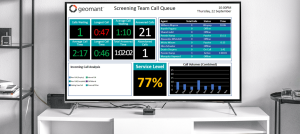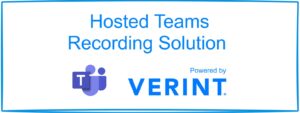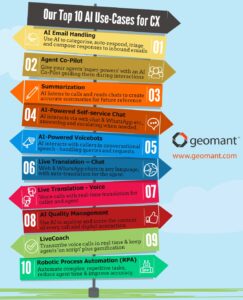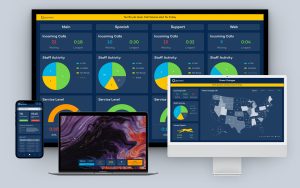Around 97% of employees say they would recommend remote work, and 98% say they’d work remotely at least part-time for the rest of their careers.
Since the pandemic of 2020 pushed more companies to experiment with remote working strategies, many business leaders have agreed that the future of the office is hybrid. With a portion of employees working in the office, and a segment working outside, companies can achieve the best of both worlds.
The only problem is making sure that remote and in-office employees remain productive, engaged, and well-aligned in their disparate environments.
Companies interested in the future of hybrid work have already begun to invest in things like Microsoft Teams contact centers to bring staff together wherever they are, and cloud-based software to keep employees productive in any environment.
However, one of the more overlooked aspects of thriving in a hybrid space is providing the right training. How do we keep staff members up to date when not everyone will be available for in-person classes and experiences?
Designing a Training Strategy for Hybrid Work

Training in the new age of hybrid work starts with making sure employees are comfortable with the tools they’re going to be using. Everyone in your team should have access to the right CCaaS and UCaaS tools. Rolling out the same cloud-based software to all team members will help to avoid the “us” vs “them” culture which can arise in some hybrid spaces.
Additionally, when all your employees are using the same tools, it’s much easier to keep track of workplace statistics, trends, and metrics. To build your strategy for hybrid training think about:
- What kind of new tools and services your employees are going to use: CCaaS or contact center as a service solution is particularly popular.
- How often you’ll need to provide updates on new feature sets: Cloud environments can easily scale and adapt with your business. New training will be essential with every update.
- Which team members need the most support: Some employees will struggle more with technology than others. These people may need extra mentorship
Remember, your training strategy shouldn’t just include getting people ready for remote work. Once you’ve shown people around things like call center wallboards, call center dashboard technology, and tools for real-time metrics, you’ll need to consider long-term development.
You’ll also need to implement tools into your contact center and business operations which allow you to track the results of your training.
Build Avenues for Training

Most companies will have different avenues of training to offer for their hybrid workers, such as:
- Call center enablement: This involves training your users on how to navigate a new agent desktop, read contact center digital displays, experiment with dashboards, and so on.
- Performance improvement: This area of training focuses on making your team members more effective at what they do, often responding to real-time metrics and historical KPIs.
- Future-proofing: With this kind of training, you offer employees the chance to learn new skills that will make them more efficient in the future and improve engagement.
To determine what kind of training you’ll need in each avenue, you’ll need to audit the existing work your employees are doing and think about how your team might evolve.
Start by looking at your technology. Are you creating a new call center desktop environment with updated software? Will your management teams need help using this software to track the most important historical and real-time metrics? Are your agents comfortable with the contact center dashboard technology they’ll be using?
Next, examine your current metrics to see where your hybrid team can improve. How good is your First Contact Resolution percentage? Are you achieving your goals when it comes to things like Net Promoter Score and CSAT (Customer Satisfaction) ratings? If not, you might need to focus current training on ways to improve client experience.
Finally, think about the ways in which your contact center or business is changing. Do you have new KPIs that are becoming increasingly important to you, like several messages answered rather than just calls answered? What kind of future training opportunities can you issue to all team members to make them more effective in their roles?
Exploring Different Training Formats

Now that you have your three distinct avenues for training, you can think about how you’re going to deliver this education to your team. In-person lessons and classes aren’t a good idea in a hybrid environment. Even if you record training sessions for your remote employees to view, they can feel like they’re missing out on the full experience.
Instead, look into training opportunities that are inclusive for everyone. For instance, you could give employees access to a webinar where everyone can participate in the same real-time experience online. Online courses with digital tests, examinations, and feedback are becoming increasingly popular these days. Many of the most modern contact center solutions also come with videos and onboarding guidance to help train new users.
When training your employees in all three avenues, pay attention to the individual needs of each staff member, as well as the requirements of groups. You may notice that your remote employees require more regular feedback on how they perform following training than your in-office staff.
Set your management team up with wallboards that allow them to track the performance of employees in different environments and step in on conversations when necessary. Whisper tools that allow for additional advice are extremely valuable here.
Your dashboards and analytics will provide a useful view of real-time metrics for your managers, so they can track how effective each type of training really is for your team. Paying attention to these insights now will help you to decide what kind of educational opportunities you might want to embrace going forward.
With real-time metrics, your managers and supervisors will also be able to see which of your agents are struggling most with implementing new skills. This could pave the way to making important decisions about which team members need additional training and support.
Encourage Feedback from Your Employees

Dashboards and wallboard metrics aren’t just valuable for showing supervisors where teams need extra help. In a hybrid work environment, digital wallboards give your team members the opportunity to track their performance and determine how well they’re proceeding towards personal and professional goals.
Call center wallboards are an excellent source of inspiration and motivation as part of the agent desktop environment. These tools can be equipped with benchmark ratings, so your team members can see whether they’re keeping up with their colleagues or falling behind in specific areas. The same tools can even send alerts to employees when they’re falling too far below their expected performance level. This can help fight back against productivity and focus when teams are getting used to a new age of hybrid work.
Dashboards help to keep your team members aligned, even when they’re not working with their colleagues in person. With a call center dashboard, all team members can see how their work is contributing to the overall goals of the business, allowing for better buy-in from team members. Many companies keen to engage their remote and in-office employees also use wallboards for competitions.
Call center wallboards can show your team members which people are performing best, and you can even create leaderboards for your teams, with opportunities to win prizes for the best metrics in certain areas each week or month. Adding a little competition to the workplace can make life a lot more fun for your hybrid workers.
You could even connect remote and in-office employees into teams and have them work together on specific goals for a chance to win. This helps to reduce the feeling of isolation for remote employees and stops them from feeling like second-hand citizens.
Real-time performance data and motivational information keeps team members focused on achieving their goals. Access to this information can also show your agents where they might need to make suggestions on extra training opportunities. Asking your employees to request certain training and educational experiences based on what they’re struggling with the most ensures you can invest in skill development that pays off for your team.
Constantly Optimize and Improve Your Training

Finally, remember that just as the contact center environment continues to evolve, the methods used for training employees in this area are changing too. Listening to the feedback your employees provide about your training methods is a great way to keep your finger on the pulse. You can also track the analytics you collect from your call center signage and tools for insights into which educational experiences are having the most measurable results.
Tracking both quantitative data, in the form of KPIs and statistics, and qualitative information, in the form of employee comments, will ensure you can optimize and improve training over time. Soon, you’ll have a hybrid training strategy that ensures your employees remain productive and engaged wherever they might be working from.











